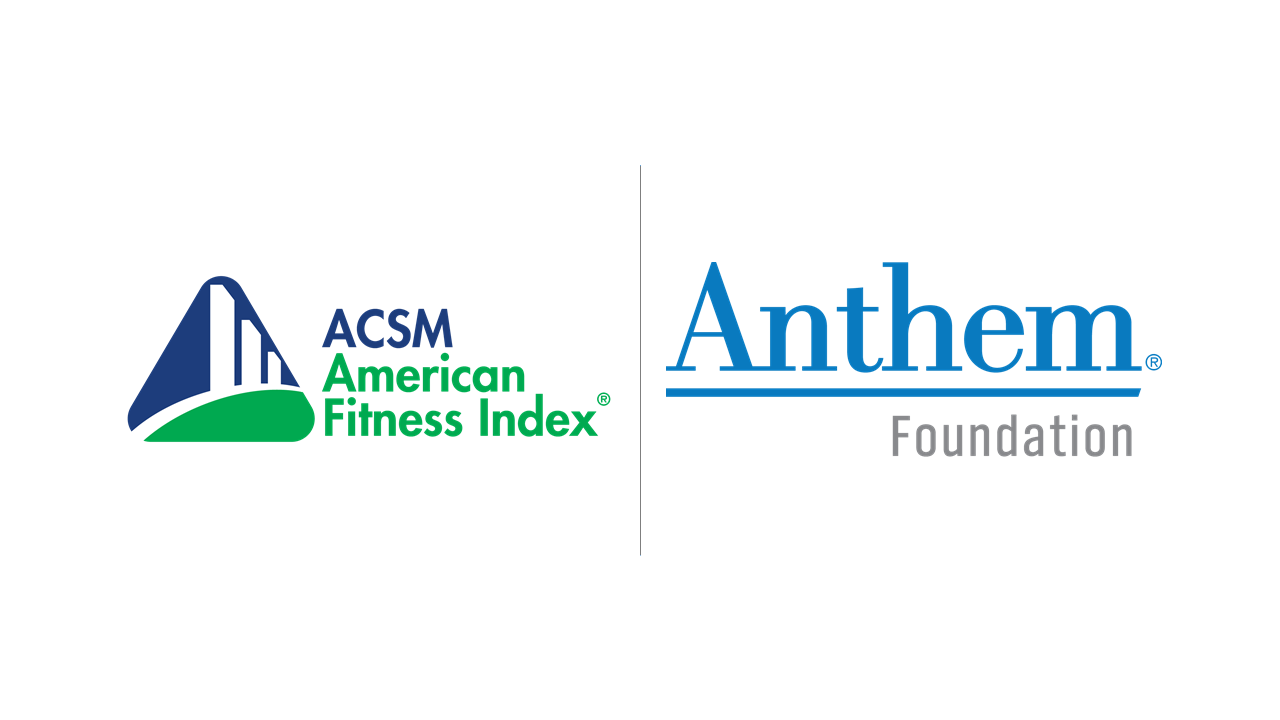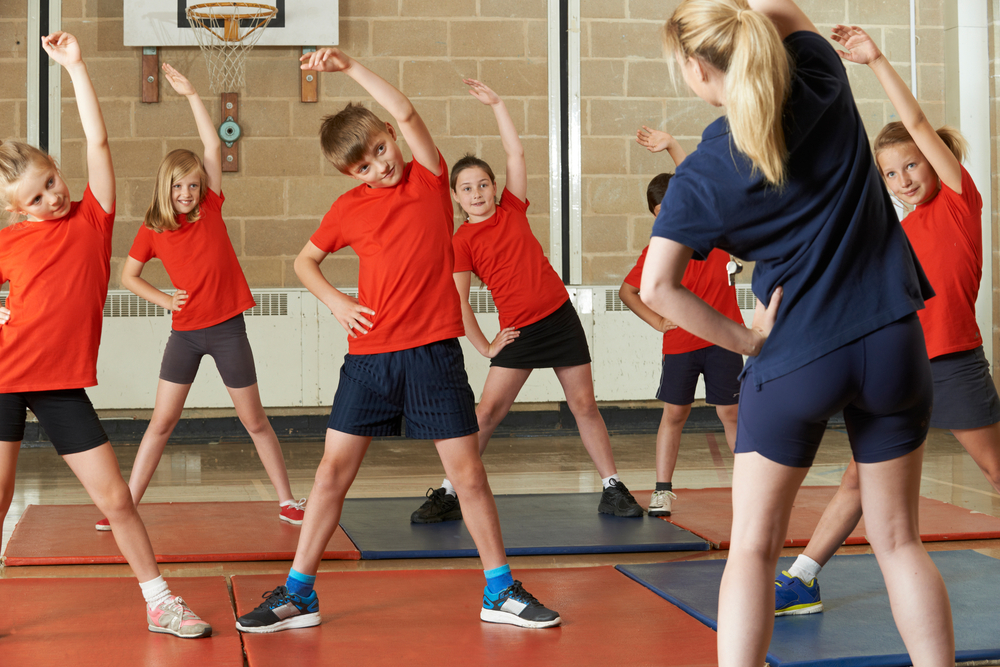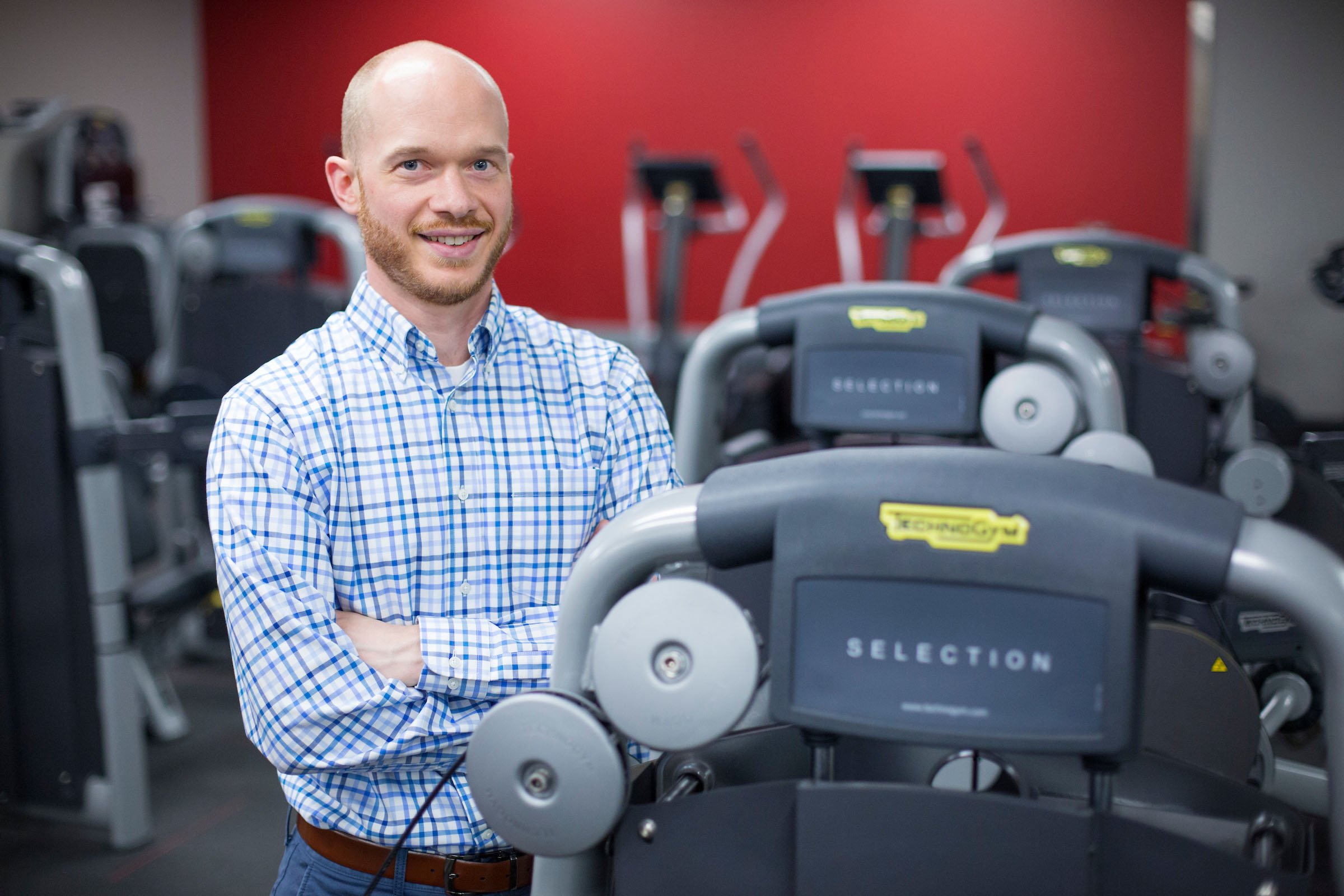ACSM’s comprehensive sports medicine and exercise science conference takes place virtually from June 1 to 5 with programming covering the science, practice, public health and policy aspects of sports medicine, exercise science and physical activity.
Tag: Physical Activity
ACSM Annual Meeting Research Highlights for June 1
ACSM’s comprehensive sports medicine and exercise science conference kicks off June 1 with programming covering the science, practice, public health and policy aspects of sports medicine, exercise science and physical activity. View program highlights.
Exercise to Improve Health: Fast, Furious and Infrequent or Slow, Steady and Sustainable?
Exercise is well-known to reduce the risk of chronic diseases like hypertension, cardiovascular disease and type 2 diabetes. While moderate-intensity continuous exercise (END) has traditionally been recommended to achieve these meaningful benefits, the time-effective alternative of sprint interval training (SIT)…
Journalists: Be our guest at the 2021 Virtual ACSM Research Conference
Gain story ideas and learn about cutting-edge science at ACSM’s comprehensive sports medicine and exercise science conference that covers the science, practice, public health and policy aspects of sports medicine, exercise science and physical activity.
Greening the Earth and Improving Health through Human-Powered Transport
Driving has become a way of life for people throughout the world. However, heavy reliance on gas-powered vehicles contributes to three problems (global climate change, air pollution and physical inactivity) that result in millions of deaths per year. As developing…
How Communities Can Use Monday to Get Their Members Moving
University of Florida Institute of Food and Agricultural Sciences Extension and Move It Monday initiative’s launch of “Walk Across Wakulla” program is the focus of the webinar, brought to you by eXtension, The Monday Campaigns, and UF IFAS Extension.
Get Off the Couch! Replacing Sedentary Time with Physical Activity or Sleep Improves Heart Health
National and international guidelines recommend replacing the amount of time spent being sedentary with physical activity to improve health. This message is especially important in the face of COVID-19, as overall sedentary behaviors have increased substantially. In fact, research suggests…
ACSM and Technogym Partner to Promote Physical Activity, Improve Quality of Life
ACSM and Technogym renew long-standing partnership to promote the importance of physical activity and combat chronic disease and illness. The agreement focuses on expanding impact of global Exercise is Medicine initiative.
Effectiveness of HIIE versus MICT in Improving Cardiometabolic Risk Factors in Health and Disease
A healthy lifestyle is composed primarily of regular structured physical activity (i.e., exercise). As a result, there is vast research into the clinical benefits of exercise, in most cases showing a better effect than drug interventions. Current physical activity guidelines…
Does More Physical Activity and Less TV Viewing Reduce the Risk of Death?
Insufficient physical activity and sedentary behavior are both associated with higher risk of chronic disease and death. However, the long-term benefits of interventions to increase physical activity and reduce sitting time are unknown as randomized controlled trials are often infeasible…
Reduced Sitting Time Improves Blood Flow in Brain and Legs
During a regular day, the average person sits for eight to 10 hours. These high levels of sitting time seem linked to an increased risk for both cardiovascular and cerebrovascular diseases. First, researchers found that three hours of sitting results…
Attenuated Rapid-Onset Vasodilation to Forearm Muscle Contraction in Black Men
Kaur and colleagues reported that rapid onset vasodilation induced by a single contraction of the forearm muscles was significantly attenuated in non-Hispanic Black men, compared to white men, and this attenuation was evident even at low intensity muscle contractions. The…
COVID-19 vaccine creates incentive to improve our health
While we wait for our turn to get vaccinated against SARS-CoV-2, we could – and probably should – use the time to make sure we bring our healthiest emotional and physical selves to the treatment, a new review of previous research suggests.
Quick, Frequent Exercise Breaks Improve Blood Vessel Health in Type 2 Diabetes
Frequent exercise breaks during prolonged sitting may be better for blood vessel health in people with type 2 diabetes than less-frequent activity interruptions. The first-of-its-kind study is published ahead of print in the American Journal of Physiology-Heart and Circulatory Physiology.
Rutgers Expert Available to Discuss Stress Reduction Benefits of Exercise and Being Outdoors Following Election
New Brunswick, N.J. (Nov. 6, 2020) – Rutgers University–New Brunswick Professor Brandon L. Alderman is available for interviews on how being outdoors and exercise can reduce stress following the 2020 election and during the COVID-19 pandemic. “Time spent outdoors and…

Cut chores and kill chill time: new advice to boost children’s academic achievement
Determining a child’s best daily balance of sleep, activity and relaxation can be a challenge, but if you’re hoping to improve their academic results, then it’s time to cut back on chores and chill time, according to new research from the University of South Australia.

The ‘Goldilocks Day’: the perfect day for kids’ bone health
Not too little, not too much – Goldilocks’ ‘just right’ approach can now assess children’s daily activities as new research from the University of South Australia confirms the best make up of a child’s day to maximise bone health and function in children.

Expert Available to Speak About Work-From-Home Injuries; October is National Chiropractic Health Month
After months of sheltering in place, many people are still practicing lifestyle changes necessitated by the COVID-19 pandemic to reduce their potential exposure: steering clear of crowded public spaces and working from home, forgoing air travel for car trips, ordering…
Missing rehab due to COVID-19 increased distress in women with breast cancer
Beyond the tragic surges in hospitalizations and deaths, the first months of the COVID-19 pandemic disrupted healthcare for people with a wide range of medical conditions – including cancer. For women recovering after breast cancer treatment, COVID-19-related interruptions in rehabilitation care led to emotional distress and other effects on health and well-being, reports a study in the October issue of Rehabilitation Oncology, official journal of the APTA Oncology, an Academy of the American Physical Therapy Association. The journal is published in the Lippincott portfolio by Wolters Kluwer.
One-size-fits-all is no fit for heart health
From Weight Watchers to wearable tech – wherever we look, there are messages encouraging us to stay fit and healthy. But diets and training methods aside, when it comes to heart health, research from the University of South Australia shows that a far more personalised approach is needed…and it all starts with your genes.
Move More or Sit Less: How to Maintain a Healthy Brain
Worldwide, a person is diagnosed with dementia every three seconds. Regular physical activity and limited sedentary behavior (i.e., time spent sitting or lying down) are two important lifestyle strategies for maintaining good brain health. However, we do not know which…
Exercise During Pregnancy: A Prescription for Improved Maternal/Fetal Well-being
Evidence now supports the safety and health benefits of prenatal physical activity for pregnant women. Therefore, it is critical that women and exercise professionals shift their individual and collective perspective of prenatal physical activity away from the potential risks of…
Menopause May Affect Improvements in Exercise Fitness
All women go through menopause, usually between the ages of 46 and 54. Their periods stop, and they can no longer get pregnant. Postmenopausal women also have lower heart function. This study investigated whether menopause influences heart function and exercise…
Quantity and Context of Physical Activity: Important Factors in the Relationship with Pain
Many people are affected by painful conditions like low back pain, arthritis and cancer. Pain can be difficult to treat, with few safe and effective options. Some research suggests that being physically active can reduce the severity and impact of…
Hourly 4-s Cycle Sprints Prevent Inactivity-Induced Impairment of Fat Metabolism
It is well known that daily exercise has health benefits, and physical inactivity is unhealthy. Inactivity, typically characterized by daily sitting time, needs to be interrupted periodically with physical activity. However, the most effective amount and type of activity have…
Retirement Modifies Daily Physical Activity
Retirement changes daily routines. Time previously used for work and commuting is replaced by leisure time. In this study, more than 500 employees from Finland wore motion sensors before and after retirement. The results show that women’s physical activity decreased,…
Exercise and Insulin Metabolism in NAFLD
The obesity epidemic has led to an increase in the number of people who have a form of liver disease known as nonalcoholic fatty liver disease, or NAFLD. The disease can cause dangerous levels of fat to build up in…
ACSM Publishes Call to Action Addressing COVID-19 and Return to Sports and Physical Activity
ACSM published a call to action statement addressing COVID-19 and safely returning to sports and exercise. Authored by ACSM subject matter experts, the statement highlights the current science around COVID-19 and provides 12 action steps to consider. “COVID-19: Considerations for Sports and Physical Activity” is ACSM’s first call to action statement and published in the August issue of Current Sports Medicine Reports.
University of Miami Sports Medicine Institute expert leads call to action for harnessing exercise’s health benefits during the pandemic
To address and overcome the challenges so Americans can return to or sustain physical activity safely, Thomas M. Best, M.D., Ph.D., FACSM, professor of orthopedic surgery at the University of Miami Miller School of Medicine and research director of the UHealth Sports Medicine Institute, and sports medicine colleagues from around the U.S. wrote “COVID-19: Considerations for Sports and Physical Activity,” published August 7 in Current Sports Medicine Reports, an American College of Sports Medicine journal.

National Farmers Market Week Kicks Off Sunday, and D.C. Ranks #1 in the U.S.
Aug. 2-8 marks National Farmers Market Week! D.C. ranks number one for farmers markets among the 100 largest U.S. cities according to the 2020 American Fitness Index rankings published by ACSM and the Anthem Foundation. More than 8,600 farmers markets currently operate across the U.S., stimulating the local economy and providing access to nourishing food.
Breaking Up Sitting Time: Should We All Stand Up, Sit Down or Keep Moving?
Sitting for prolonged periods can increase the risk of diabetes and other health problems. While physical activity recommendations suggest breaking up sitting time, it is not known if all individuals respond the same way. Therefore, investigators examined whether an individual’s…

Arlington, Va., Named ‘Fittest City’ in 2020 American Fitness Index Ranking of Top 100
ACSM and the Anthem Foundation release the 2020 American Fitness Index, ranking America’s 100 largest cities on health behaviors, chronic disease and community infrastructure indicators. Arlington, Va. earned the title of “America’s Fittest City.” Seattle, Wash.; Minneapolis, Minn.; Madison, Wis.; San Francisco, Calif.; Washington, D.C.; Irvine, Calif.; Denver, Colo.; Boise, Idaho; and Boston, Mass., round out the top 10 fittest cities.

ACSM/Anthem American Fitness Index to Reveal 2020’s Fittest City
For more than a decade, the American Fitness Index has recognized the critical role all three play in a city’s overall health and fitness. ACSM and the Anthem Foundation will release the 2020 Fitness Index rankings at 7 a.m. EDT on July 14, 2020.
Exercise Levels Can Help Doctors Predict Risk of Heart Disease and Death Among Older Adults
Asking elderly patients how much they exercise can help predict their risk of heart disease and death, Mount Sinai and collaborative researchers say.

Expert offering guidance on the minimum daily dose of physical activity during COVID-19
In discussing how much and what types of physical activity are recommended according to national guidelines, Professor Riebe notes, “There are national guidelines for physical activity and there are guidelines both for cardiorespiratory activity and also for resistive activity. So,…

Lack of physical activity during COVID-19 may fuel childhood obesity, new study finds
The childhood obesity rate in the United States may increase by 2.4% if school closures continue into December, finds a new study from the Brown School at Washington University in St. Louis. Having schools closed nationwide, children in the U.S. have missed their opportunity to participate in physical education classes and other school-based physical activities, such as recess and after-school sports programs.

Replacing time spent sitting with sleep or light activity may improve your mood
Moving more and sitting less was a challenge for many, even before states started issuing stay-at-home orders. Despite disruptions to our work and exercise routines, new research shows that making subtle changes at home may improve our mental health.
Staying Physically Active during the COVID-19 Pandemic
American College of Sports Medicine shares resources to help individuals and families stay active at home and meet recommended guidelines for physical activity
Rutgers Expert Available to Discuss Physical Activity and Health During COVID-19 Crisis
New Brunswick, N.J. (March 18, 2020) – Rutgers University–New Brunswick Professor Brandon L. Alderman is available for interviews on how to stay active when gyms are closed and you’re confined to home during the COVID-19 crisis. Alderman can also discuss…
ACSM Tackles Myth on Genetics and Heart Disease as Part of American Heart Month
In honor of American Heart Month, the American College of Sports Medicine (ACSM) teams up with ACSM Fellow Beth A. Taylor, Ph.D., from the University of Connecticut to tackle a myth on genetic predisposition and heart disease.
New Exercise is Medicine® National Center in Ireland
Multi-sector leaders in Ireland unite to form Exercise is Medicine National Center, join global health initiative combating physical inactivity and improving health of citizens
Highly Active Adults Vary Their Workouts to Meet Exercise Recommendations
Highly active adults engage in a greater variety of physical activities than do less active adults, finds a new study led by researchers at NYU Rory Meyers College of Nursing.
Soy Supplements, Kids Sprinting to Health, Diets & Elite Soldier Performance & More from Medicine & Science in Sports & Science
If you’re looking for health and fitness story ideas, view these research highlights from ACSM’s flagship research journal, Medicine & Science in Sports & Exercise®.
Academy of Nutrition and Dietetics Promotes Eating Right Bite by Bite During National Nutrition Month® 2020
Choosing nutritious foods and getting enough physical activity can make a significant difference in your health. For National Nutrition Month® 2020, in March, the Academy of Nutrition and Dietetics encourages people to make informed food choices and develop sound eating and physical activity habits.
Senate Passes Bill Promoting Physical Activity Among Americans
The U.S. Senate yesterday passed S. 1608, a major health-promotion bill supported by the American College of Sports Medicine. The Promoting Physical Activity for Americans Act would require the updating of the U.S. Physical Activity Guidelines for Americans every 10 years.
New WHO-led study says majority of adolescents worldwide are not sufficiently physically active, putting their current and future health at risk
The first ever global trends for adolescent insufficient physical activity show that urgent action is needed to increase physical activity levels in girls and boys aged 11 to 17 years. The study, published in The Lancet Child & Adolescent Health journal and produced by researchers from the World Health Organization (WHO), finds that more than 80% of school-going adolescents globally did not meet current recommendations of at least one hour of physical activity per day – including 85% of girls and 78% of boys.
Senate Committee Passes Bill Designed to Keep Americans Informed, Healthy
The U.S. Senate Committee on Health, Education, Labor and Pensions today passed a major health-promotion bill supported by the American College of Sports Medicine. Senate Bill 1608 would require updating the Physical Activity Guidelines for Americans every 10 years.
Fragmented Physical Activity Linked to Greater Mortality Risk
Although reduced physical activity during the day is widely seen as a harbinger of mortality in older people, fragmentation of physical activity—spreading daily activity across more episodes of brief activity—may be an earlier indicator of mortality risk than total amount of daily activity, according to a new study from scientists at the Johns Hopkins Bloomberg School of Public Health.
New Air Quality Ranking has 10 Worst Cities in California, Arizona
Scientific evidence proves that poor air quality affects health, and Long Beach, California residents should be concerned. Long Beach ranks last for air quality among the 100 largest U.S. cities, according to the 2019 American Fitness Index® rankings published by ACSM and the Anthem Foundation.

Children spend less time reading and engaging in physical activity as they grow older
A new study from Queen’s University Belfast and Rutgers School of Public Health researchers has found that children from disadvantaged backgrounds spend less time reading and engaging in physical activity and exercise than their peers as they get older.